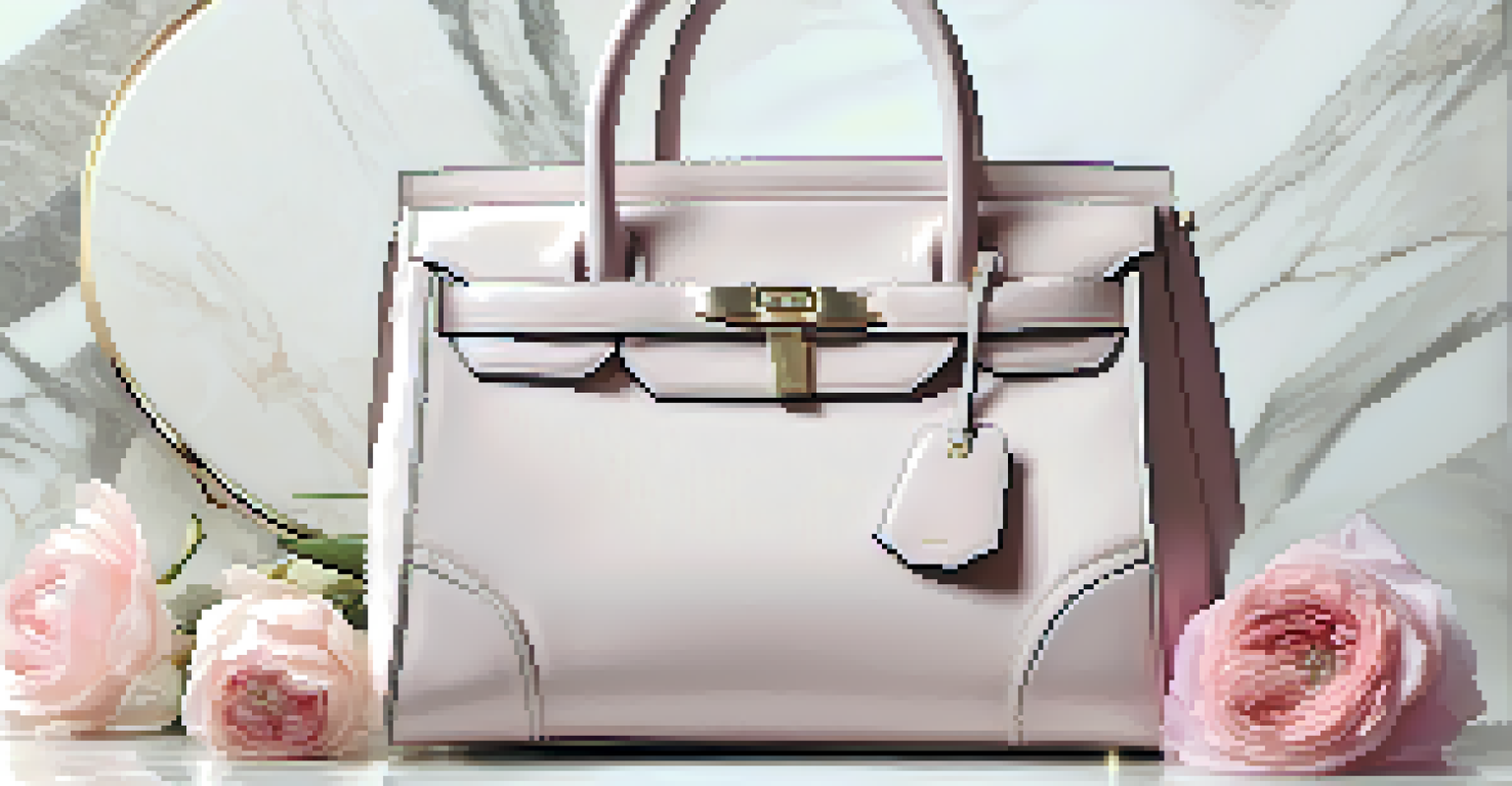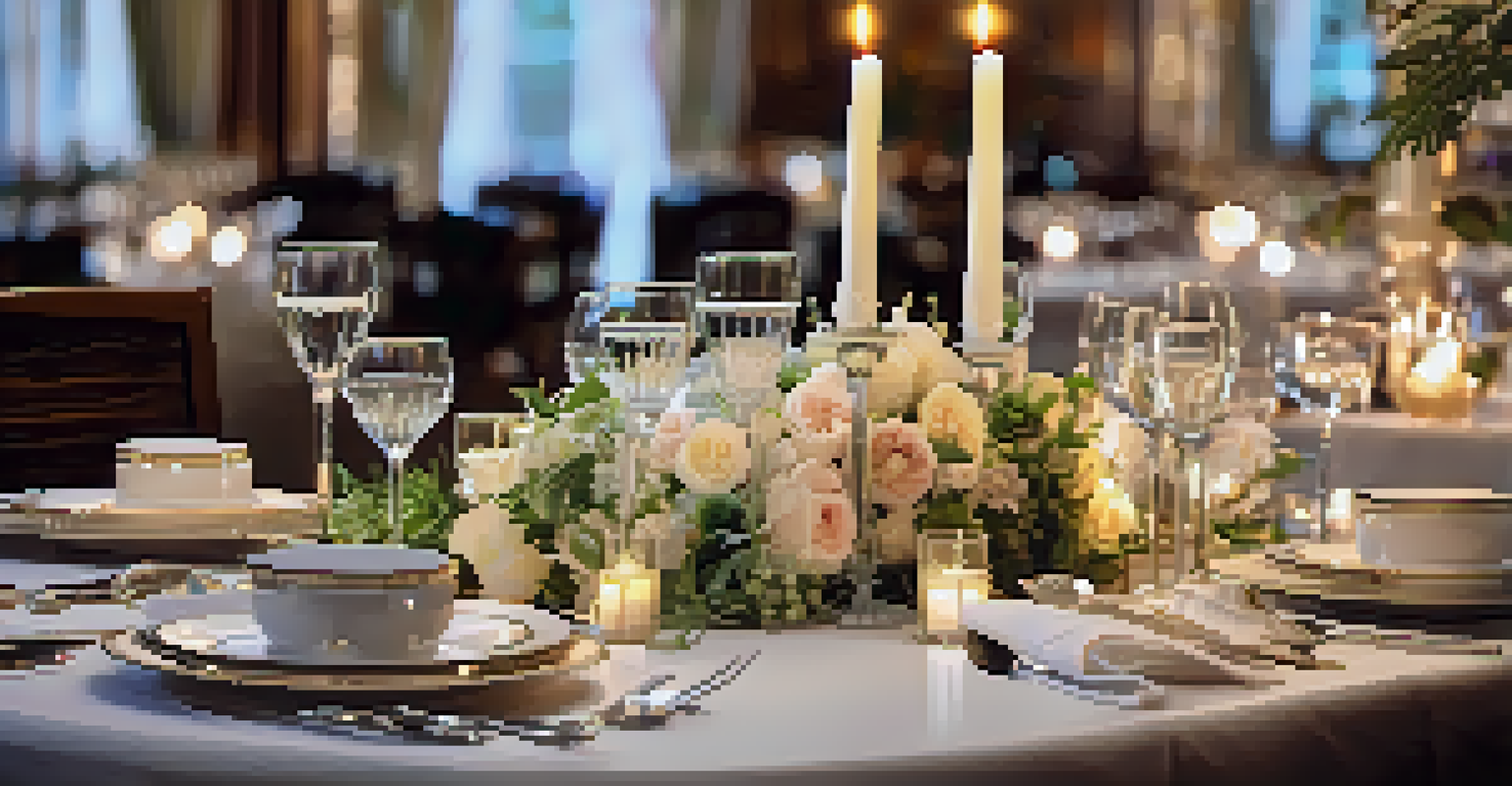Understanding Luxury Markets: Tailoring Your Photography

Defining the Luxury Market: What Sets It Apart?
The luxury market is characterized by high-quality products, exclusivity, and a rich brand heritage. Unlike mass-market goods, luxury items often evoke emotional connections and lifestyle aspirations. Understanding these nuances is critical for photographers aiming to capture the essence of luxury.
Luxury is in each detail.
For instance, think of brands like Chanel or Rolls-Royce. They don't just sell items; they sell a lifestyle and a story. As a photographer, your job is to highlight these unique narratives that resonate with affluent consumers.
By grasping what defines luxury, you can tailor your photography to better reflect the values and aesthetics that appeal to this discerning audience.
Understanding Your Audience: Who Are Luxury Consumers?
Luxury consumers are often characterized by their desire for exclusivity and superior quality. They tend to prioritize experiences over possessions, seeking products that reflect their status and individuality. This demographic is diverse, encompassing various ages, backgrounds, and interests, but they all share a common appreciation for craftsmanship.

For example, a luxury watch buyer may be looking for more than just a timepiece; they want a symbol of success and a piece of art. Knowing your audience's motivations will help you capture images that speak to their aspirations.
Essence of Luxury Photography
Capturing luxury requires understanding its exclusivity, craftsmanship, and the emotional connections that affluent consumers seek.
By connecting with your audience on a deeper level, you can create compelling visuals that resonate and drive engagement.
Crafting a Luxurious Aesthetic: Key Photography Techniques
When photographing luxury items, the aesthetic you create is paramount. Techniques such as soft lighting, rich colors, and meticulous composition can help convey a sense of opulence. For instance, using natural light can enhance the textures and details of a product, while a clean background can keep the focus on the luxury item itself.
The best things in life are free. The second best are very expensive.
Additionally, consider the use of props that evoke a sense of sophistication, like elegant fabrics or high-end accessories. This adds context and depth to your images, making them more appealing to the luxury market.
Ultimately, your goal is to create an atmosphere that makes viewers feel the allure of the luxury item, drawing them in and inviting them to imagine owning it.
Storytelling Through Imagery: The Power of Context
Storytelling is a powerful tool in luxury photography. Each image should tell a story that resonates with the consumer's aspirations and desires. For example, instead of simply showcasing a luxury handbag, consider capturing it in a lifestyle setting where it enhances the overall elegance of a scene.
Using narratives allows you to create emotional connections, making your photography more impactful. Showcasing the bag being used at an upscale event can evoke a sense of exclusivity and desirability.
The Importance of Storytelling
Every image should tell a compelling story that resonates with luxury consumers' aspirations and desires.
By weaving a story into your images, you can elevate your photography from mere visuals to compelling narratives that engage your audience.
Post-Processing: Enhancing Luxury Photography
Post-processing is an essential step in luxury photography that can make a significant difference. Techniques like color correction, retouching, and adding subtle filters can enhance the overall aesthetic and feel of your images. However, it’s crucial to maintain authenticity; over-editing can detract from the luxury appeal.
For instance, brightening the colors slightly or softening harsh shadows can create a dreamy effect that complements luxury branding. It's about enhancing the beauty of the product without losing its essence.
Remember, the goal is to present the product in the best light possible while ensuring it still looks authentic and appealing to your audience.
Building Your Portfolio: Showcasing Luxury Work
Your portfolio is your calling card in the luxury market, so it needs to reflect your understanding of luxury aesthetics and storytelling. Focus on quality over quantity; select your best work that showcases a diverse range of luxury items and settings. This will demonstrate your versatility and ability to capture the essence of luxury.
Consider organizing your portfolio into categories, such as fashion, jewelry, or automotive, to make it easy for potential clients to navigate. Including behind-the-scenes shots can also offer insight into your creative process and build a connection with your audience.
Building Connections in Luxury
Networking is essential in the luxury market, as relationships foster collaboration and open doors to new opportunities.
Ultimately, a well-curated portfolio can effectively convey your expertise and attract clients who value your unique perspective on luxury photography.
Networking in the Luxury Market: Making Valuable Connections
Networking is crucial in the luxury market, where relationships often dictate success. Attend industry events, engage with luxury brands on social media, and connect with fellow creatives to build your network. These connections can lead to collaboration opportunities and referrals that may not be accessible through traditional marketing methods.
For instance, partnering with a luxury brand for a photoshoot can provide exposure and a chance to showcase your skills to a broader audience. Building these relationships allows you to understand the market better and stay informed about trends.

By nurturing your network, you create a supportive community that can help elevate your work in the luxury photography space.